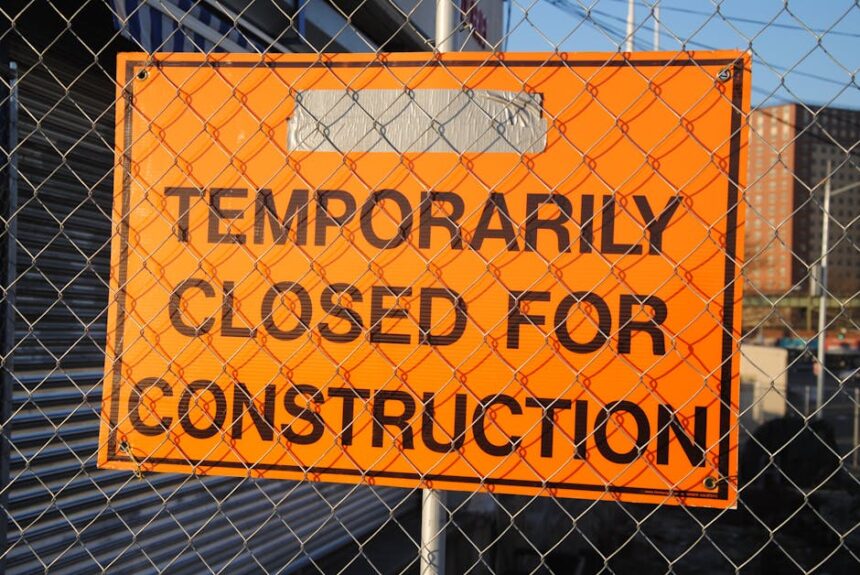Mastering Broken Link Building Techniques
Broken link building, often abbreviated as BLB, stands as one of the most effective and ethically sound strategies within the expansive realm of off-page SEO. At its core, BLB involves identifying broken links (links pointing to non-existent pages, often returning a 404 error) on other websites, creating superior replacement content that aligns with the context of the defunct link, and then reaching out to the website owner or webmaster to suggest your content as a suitable, value-adding replacement. This method offers a trifecta of benefits: it helps website owners fix issues on their site, it improves user experience by eliminating dead ends, and most importantly for SEO, it provides an opportunity to acquire high-quality, relevant backlinks from authoritative sources. Unlike many other link building tactics that can feel forced or unnatural, BLB is inherently helpful and provides a genuine reason for a website owner to link to your content. The broken link often sits on an established page, meaning its existing authority and relevance are transferred through the new link to your site, making these links particularly potent for improving search engine rankings and domain authority. This technique capitalizes on a universal problem – link rot – transforming a common internet imperfection into a strategic SEO advantage. It’s a proactive, investigative approach that requires meticulous research, compelling content creation, and nuanced outreach, setting it apart from more passive or transactional link acquisition methods. The inherent value proposition for the linking site makes the conversion rate for BLB campaigns significantly higher than many other outreach-based strategies, solidifying its position as a cornerstone technique for serious digital marketers and SEO professionals.
Strategic planning and meticulous niche identification form the bedrock of any successful broken link building campaign. Before embarking on the hunt for broken links, it is imperative to possess a crystal-clear understanding of your target audience and the specific niche in which your website or content operates. This foundational clarity ensures that all acquired links are highly relevant, thereby maximizing their SEO impact. Begin by thoroughly defining your core audience, their interests, pain points, and the type of content they seek. This insight will guide your selection of target websites for link prospecting. Subsequently, identify authoritative websites within your defined niche. These are typically industry leaders, well-established blogs, reputable news outlets, educational institutions, government bodies, or highly respected resource aggregators that consistently publish high-quality content and attract significant organic traffic. Tools like Ahrefs, SEMrush, Moz Link Explorer, and even simple Google searches can assist in identifying these influential players. Look for sites with high Domain Authority (DA), Domain Rating (DR), or similar metrics, as these indicate stronger link juice potential. Competitor analysis is also crucial here; analyze the backlink profiles of your top-ranking competitors to uncover potential prospects they’ve already secured or even missed opportunities. Once you have a list of potential target domains, brainstorm and catalogue your existing content assets that could serve as potential replacements for broken links. This includes comprehensive guides, detailed tutorials, unique research studies, compelling infographics, interactive tools, curated resource lists, or even well-researched blog posts. Critically evaluate each asset’s depth, accuracy, originality, and user experience. The goal is to offer content that is not merely a replacement but a significant upgrade – 10x content – surpassing the quality and value of the original broken page. If you lack suitable content, this phase necessitates a content creation plan tailored to fill those gaps, ensuring that when you find a relevant broken link, you have a superior solution readily available or quickly creatable. Finally, set realistic goals and Key Performance Indicators (KPIs) for your BLB campaigns. These might include the number of unique referring domains acquired, the average domain authority of acquired links, the conversion rate from outreach to link placement, or the ultimate impact on specific keyword rankings and organic traffic over time. Establishing these benchmarks early allows for accurate measurement of success and iterative refinement of your strategy. Building a structured prospecting list framework, typically within a spreadsheet, becomes essential to organize your initial findings, track progress, and maintain a clear overview of potential opportunities, preventing scattershot efforts and ensuring a systematic approach to BLB.
The discovery of broken links, Phase 1 of the BLB process, is a meticulous and often time-consuming endeavor that forms the backbone of a successful campaign. Several robust methods exist for unearthing these invaluable link opportunities, each with its own advantages and specific tool requirements.
Method 1: Competitor Backlink Analysis for Broken Links
This is arguably one of the most potent methods. The premise is simple: if a competitor has historically received backlinks from a high-authority site, and one of those linked pages has since gone offline, that presents a direct, highly relevant opportunity for you.
- Tools: Premium SEO tools like Ahrefs, SEMrush, and Moz Link Explorer are indispensable here.
- Step-by-Step Process:
- Identify Top Competitors: List your primary organic search competitors.
- Analyze Backlinks: Input a competitor’s domain into your chosen SEO tool (e.g., Ahrefs’ “Site Explorer”).
- Filter for Broken Links: Navigate to their “Broken Backlinks” or “404 Backlinks” report. Most tools have a dedicated feature for this. This report displays external websites that are linking to non-existent pages on your competitor’s domain.
- Export and Review: Export this list. For each broken link, critically examine the referring URL (the page on the other website that links to the competitor’s 404 page), the anchor text used, and the context surrounding the link.
- Assess Relevance: Determine if the referring page’s topic aligns with your content or if you have a superior piece of content that could naturally replace the broken link. For instance, if a competitor’s old “Guide to Digital Marketing Tools” went 404, and a high-authority blog linked to it, and you have a more comprehensive, updated “Ultimate Digital Marketing Tools List,” you have a strong match.
- Analyzing Anchor Text and Surrounding Content: This step is crucial. The anchor text and the paragraph in which the link is embedded provide significant clues about the original intent and content of the broken page. Use this information to gauge the relevance of your potential replacement content.
- Scalability Considerations: This method is highly scalable as SEO tools can quickly churn out thousands of broken link opportunities from multiple competitors. The challenge lies in efficiently filtering and qualifying these prospects for genuine relevance and authority.
Method 2: Discovering Broken Links on Niche-Relevant Websites
Instead of starting with competitors, this method directly targets high-authority websites within your niche that are likely to have accumulated link rot over time.
- Using Browser Extensions:
- Check My Links: A simple Chrome extension that scans an entire webpage for broken links (404 errors) and highlights them.
- LinkMiner (Ahrefs Bar): Another excellent Chrome extension that highlights broken links and provides useful SEO metrics for each link found.
- Manual Inspection of Resource Pages, Link Lists, Blog Rolls: Many authoritative sites, especially older ones, maintain dedicated “resources,” “recommended reading,” “links,” or “blogroll” pages. These pages are goldmines for BLB because they are explicitly designed to link out to other valuable resources. Systematically visit these pages on target sites and use your chosen browser extension to quickly identify broken links.
- Targeting Aged Content and Evergreen Resources: Older articles, particularly those that were highly cited or popular in their time, are more prone to developing broken links simply due to the passage of time. Focus your efforts on these evergreen resources within your niche, as they often have accumulated significant link equity.
- Filtering and Qualifying Prospects: Once a broken link is identified, immediately check the authority of the referring domain (using Mozbar, Ahrefs Bar, etc.). Prioritize links from high DA/DR sites. Also, consider the likelihood of the webmaster updating the link – highly maintained sites might be quicker to respond.
Method 3: Advanced Search Operators & Niche-Specific Queries
Leverage the power of Google search to pinpoint specific types of pages that are likely to contain external links, and thus, potential broken links.
- Google Search Operators:
site:example.com intitle:"resources": Find resource pages on a specific domain."your niche keyword" inurl:links: Find pages containing “links” in their URL related to your niche."your niche keyword" intitle:resource-page: Similar to the above."your niche keyword" (inurl:links OR inurl:resources OR inurl:recommendations): Combines operators for broader search.
- Leveraging Wikipedia for Broken Links: Wikipedia is a vast repository of information, and its rigorous citation system means broken external links are flagged. Search Wikipedia for topics relevant to your niche. Look for citations marked “[dead link]” or similar. While direct links from Wikipedia are “nofollow,” the sources they cite are often high-authority, and the sites linking to those Wikipedia pages might also be good BLB prospects. You can then use the methods above to analyze the sites that link to the dead Wikipedia source.
- Using Specialized Broken Link Finders:
- Screaming Frog SEO Spider: While primarily a site crawler, Screaming Frog can crawl external links on a website. You can set it to crawl a specific site and report on all external links, including any 404s it encounters. This is excellent for in-depth analysis of a single large site.
- Dead Link Checker: A simple online tool that scans a single URL for broken links. Useful for quick spot checks.
Method 4: Monitoring Outgoing Links of High-Authority Sites
This is a more proactive, ongoing strategy. Instead of just finding existing broken links, you monitor target sites for new broken links as they appear.
- Tools and Techniques: Some enterprise SEO platforms or custom scripts can be set up to periodically crawl external links of specific high-value domains you are targeting. This is a more advanced technique typically employed by agencies or in-house teams with dedicated resources.
- Setting up Alerts: While direct “new broken link” alerts are rare for outgoing links, you can set up alerts for when content on your target site changes significantly (e.g., using a tool like Visualping) and then manually re-check external links.
Organizing Your Findings:
Regardless of the method used, robust organization is paramount. A comprehensive spreadsheet (Google Sheets or Excel) is indispensable for tracking your broken link discoveries.
- Essential Data Points to Record:
- Broken URL: The exact URL of the non-existent page.
- Referring URL: The URL of the page on the prospect’s website that contains the broken link.
- Anchor Text: The specific text used for the broken link.
- Surrounding Context: A brief note about the paragraph or section where the link appears.
- Link Type: Is it a link on a resource page, a contextual link within a blog post, a mention, etc.?
- Domain Authority/Rating (DR/DA) of Referring URL: To prioritize high-value prospects.
- Potential Replacement URL (Your Content): The URL of your content that could serve as a replacement.
- Contact Information: Name and email of the relevant webmaster/editor.
- Outreach Status: (Not Yet Contacted, Emailed, Replied, Link Placed, Declined, Followed Up, etc.).
- Notes: Any specific observations or details pertinent to the opportunity.
This systematic approach to prospecting ensures that you not only uncover a significant number of broken link opportunities but also meticulously qualify and organize them for the subsequent phases of content creation and outreach. Without this detailed foundation, the entire BLB campaign risks becoming a disorganized and inefficient endeavor.
Phase 2: Content Creation and Alignment for Broken Links is the creative heart of the broken link building process, demanding strategic thinking and a commitment to quality. Once you’ve successfully identified a broken link opportunity, the next critical step is to either create new content or meticulously align your existing content to serve as a superior replacement for the defunct page. This phase is where you demonstrate the true value proposition of your outreach.
Analyzing the Broken Content:
Before jumping into content creation, you must fully comprehend what the original, now-broken content was.
- Using the Wayback Machine (archive.org): This invaluable tool allows you to access archived versions of web pages. Input the broken URL into archive.org, and it will often provide snapshots of the page from various dates. This gives you a clear picture of the original content, its scope, depth, and even its design.
- Identifying the Intent and Value of the Lost Page: As you review the archived content, ask yourself: What problem did this page solve? What information did it provide? Who was its target audience? What was its primary value proposition? Understanding the original intent is crucial for creating a truly relevant replacement.
- Determining if You Can Create a Superior Replacement: This is the core question. Can you replicate the original content’s value, but then significantly enhance it? Can you make it more comprehensive, more up-to-date, better organized, more engaging, or more visually appealing? The goal is not just to replace, but to upgrade the user experience for the linking site’s audience. If you cannot genuinely create something better or equally valuable, then the opportunity might not be as strong.
Content Strategy for Replacement:
Your replacement content should not just fill a void; it should exceed expectations. This is where the concept of “10x Content” comes into play.
- Creating 10x Content: This means developing content that is ten times better than anything else currently available on that specific topic. It implies:
- Deeper and More Comprehensive: Covering all facets of the topic, leaving no stone unturned.
- More Up-to-Date: Incorporating the latest data, research, trends, and technologies.
- Better Designed and More Visually Appealing: Utilizing high-quality images, infographics, videos, and a clean, user-friendly layout.
- More Actionable and Practical: Providing clear steps, examples, and takeaways.
- Original Research or Unique Insights: Offering something truly novel.
- Enhanced User Experience: Easy to navigate, readable, and engaging.
- Types of Content for Broken Link Building: The best type of content depends on the context of the broken link and your niche.
- Comprehensive Guides/Tutorials: Ideal for broken “how-to” articles or detailed explanations. These should be exhaustive, often running several thousand words.
- Infographics & Visual Content: If the original content was data-heavy or visually oriented, a new, high-quality infographic with updated statistics can be incredibly effective. Visuals are highly shareable and easy to digest.
- Tools & Calculators: If the original content provided a utility (e.g., a simple calculator, a template), creating a more robust, user-friendly version can be a powerful replacement.
- Case Studies & Research: Original research, surveys, or detailed case studies provide unique, authoritative content that is highly linkable.
- Curated Resource Lists: If the broken link was part of a resource list, your meticulously curated and annotated list of valuable resources (perhaps including your own relevant content) can be a perfect fit.
- Optimizing Your Replacement Content for SEO and User Experience: While the primary goal is to serve as a broken link replacement, your content should also be optimized for organic search. This means:
- Keyword Research: Identify relevant keywords and naturally incorporate them.
- On-Page SEO: Optimize title tags, meta descriptions, headings (H1, H2, H3), and image alt text.
- Internal Linking: Link to other relevant pages on your site.
- Readability: Use short paragraphs, clear headings, bullet points, and white space.
- Mobile Responsiveness: Ensure the content looks great and functions perfectly on all devices.
- Ensuring Content Aligns with the Context of the Broken Link: This is paramount. The content you propose must naturally fit within the existing paragraph or section where the broken link resides. If the broken link was about “eco-friendly cleaning tips,” your replacement content should be specifically about “eco-friendly cleaning tips,” not “general household cleaning.” The more precise the alignment, the higher your chances of success.
Mapping Broken Links to Existing Content:
Content creation isn’t always about building from scratch. Often, you can leverage what you already have.
- Auditing Your Current Content Assets for Relevance: Before committing to creating new content, conduct a thorough audit of your existing blog posts, guides, and resources. Is there a page that already covers the topic of the broken link, or a significant portion of it?
- Identifying Opportunities to Repurpose or Update Existing Content: If you have an existing piece that’s “close enough,” consider updating and expanding it to make it a perfect fit. Add new sections, update statistics, improve visuals, or enhance its depth to transform it into 10x content suitable for the broken link opportunity. This is often more time-efficient than starting from scratch.
- When to Create New Content vs. Using Existing:
- Create New Content: When no existing content is a good fit, when the broken link is for a highly valuable, high-authority domain, or when you see an opportunity to truly dominate a topic with a definitive resource.
- Use/Update Existing Content: When you have a solid foundation that can be quickly improved, when the broken link is relevant but perhaps not from an absolute top-tier domain, or when time/resource constraints are a factor.
By dedicating significant effort to this content phase, ensuring that your proposed replacement is not just good, but truly exceptional and contextually perfect, you dramatically increase the likelihood of a successful link placement and build a stronger foundation for your website’s overall authority and user engagement.
Phase 3: Outreach and Relationship Building represents the critical juncture where your meticulous research and superior content transform into actionable link placements. This phase demands a blend of strategic communication, persistence, and a genuine desire to provide value.
Identifying the Right Contact Person:
Before drafting a single email, you must identify the individual who has the authority and interest to update the link. This is usually a webmaster, content editor, marketing manager, or site administrator.
- Using Tools:
- Hunter.io: This tool allows you to find email addresses associated with a domain. Enter the domain of the website you want to contact, and Hunter.io will often provide a list of verified email addresses found on that domain, along with their roles.
- Skrapp.io: Similar to Hunter.io, Skrapp.io is a LinkedIn email finder that can help you extract email addresses from LinkedIn profiles and company websites.
- Clearbit Connect (now part of HubSpot Sales Hub): A Chrome extension that integrates with Gmail and provides context about people and companies, often revealing contact information.
- LinkedIn for Professional Contacts: Search LinkedIn for individuals holding roles like “Editor,” “Content Manager,” “Webmaster,” “Marketing Director,” or “SEO Manager” at the target company. Once identified, you might find their email through the tools above or connect directly on LinkedIn.
- Website Contact Forms, Social Media Profiles: If direct email is elusive, look for a general contact form, an editorial contact page, or official social media channels (Twitter, LinkedIn) where you might send a polite inquiry or direct message.
- Prioritizing Decision-Makers: Always aim for the person who can directly influence the content or website updates. Reaching out to a general info@ email address is less effective than contacting the specific content editor responsible for the page with the broken link.
Crafting the Perfect Outreach Email (Key Elements):
Your email needs to be concise, compelling, personalized, and focused on value for the recipient.
- Personalization: Beyond Just Names: Simply using their first name isn’t enough. Reference specific content on their site, mention a recent article they published, or highlight how their website specifically helped you. This demonstrates you’ve done your homework and aren’t sending a generic blast.
- Subject Line: Compelling, Clear, Non-Spammy:
- Good examples: “Quick question about [Their Website Name] resource page,” “Broken link on your [Article Title] page,” “Suggestion for your [Topic] resources.”
- Avoid: “Link Exchange,” “SEO Opportunity,” “Important Backlink Request.” Be direct and intriguing without sounding self-serving.
- The Hook: Gently Point Out the Broken Link: Start by providing value. Politely inform them about the broken link you discovered.
- “I was just reading your excellent article on [Topic], and I noticed a small issue on this page: [Broken URL].”
- “I really appreciate your [Their Website Name] resource page. While browsing, I noticed one of your links [Broken URL] seems to be broken.”
- Clearly state the referring URL and the broken URL.
- The Value Proposition: How Replacing It Benefits THEM: This is crucial. Frame the request in terms of how it benefits their website and their users.
- “A broken link can negatively impact user experience and potentially even SEO for your visitors.”
- “Updating it would ensure your readers continue to get the best experience and the most accurate information.”
- “It helps keep your resource page complete and valuable.”
- The Solution: Propose Your Superior Replacement Content: Once you’ve established the problem and its impact, offer your solution. Briefly explain why your content is a suitable and superior replacement.
- “I actually have a comprehensive guide on [Your Content Topic] that covers [specific benefits/features of your content] which I think would be a perfect, up-to-date replacement.”
- “My recent article, ‘[Your Article Title],’ delves into [key aspects] and offers [unique value] that could serve as an excellent, current alternative.”
- Include a direct link to your content.
- Call to Action: Clear and Simple: Make it easy for them to take the next step.
- “Would you be open to considering it?”
- “Let me know if this might be a good fit.”
- “I’d be happy to answer any questions.”
- Professional Closing: Keep it courteous and professional. “Best regards,” “Sincerely,” “Thanks for your time.”
Email Templates and Customization:
While templates save time, remember they are a starting point. Every email must be customized.
- Examples for Different Scenarios:
- Resource Page: Focus on keeping their resource list complete and current.
- Blog Post Contextual Link: Emphasize maintaining the accuracy and value of their article’s content.
- A/B Testing: Experiment with different subject lines, opening hooks, value propositions, and calls to action to see what yields the highest open and response rates.
- Avoiding Common Outreach Mistakes:
- Being Pushy/Demanding: Never demand a link. You are offering a solution.
- Being Generic: “Dear Webmaster” or obvious template usage screams spam.
- Too Self-Promotional: Don’t talk endlessly about your company or content without first addressing their problem.
- Poor Grammar/Spelling: Proofread meticulously.
Follow-Up Strategy:
Many initial emails go unanswered. Persistence, when done professionally, pays off.
- Importance of Follow-Ups: Often, people are busy, and your email gets buried. A polite follow-up can resurface your request.
- Timing and Content for Follow-Up Emails:
- First Follow-up (3-5 business days later): A gentle reminder. “Just wanted to politely bump this email up your inbox in case you missed it…”
- Second Follow-up (7-10 business days after first): A slightly different angle or a re-emphasis of value. “I understand you’re busy, but I genuinely believe updating that link would benefit your readers…”
- Avoid more than 2-3 follow-ups unless you receive a specific indication to do so.
- Persistence vs. Annoyance: Know when to stop. If you’ve sent a couple of polite follow-ups with no response, move on. Over-persistence can damage your reputation.
Managing Outreach Campaigns:
Efficiency and tracking are crucial for scaling BLB.
- CRM Tools for Outreach:
- BuzzStream: Excellent for managing contact information, tracking outreach history, and automating personalized follow-ups.
- Mailshake: Focuses on cold email outreach, offering templates, personalization, and tracking.
- Pitchbox: A more robust platform designed for comprehensive link building and content promotion campaigns, including BLB.
- Tracking Email Opens, Replies, and Link Placements: Most outreach tools provide these metrics. This data is vital for understanding your campaign’s performance and making data-driven adjustments.
- Automating Parts of the Outreach Process while Maintaining Personalization: Tools can automate follow-up sequences, but the initial email and the core personalization must be handcrafted. Balance automation with genuine human connection.
Handling Responses:
- Positive Responses: Be gracious and prompt. Thank them profusely. If they have questions or need anything further, be highly responsive and helpful. Confirm the link placement and add it to your tracking sheet.
- Negative/No Response: Learn from it. Was the contact wrong? Was the content not a perfect fit? Was the site too busy? Move on to the next opportunity. Don’t dwell on rejections.
- Requests for Payment/Reciprocal Links:
- Payment: Generally, avoid paying for links. This violates Google’s guidelines and can lead to penalties. Politely decline, emphasizing your white-hat approach.
- Reciprocal Links: Evaluate carefully. A simple 1:1 reciprocal link often looks unnatural. If there’s a genuine, natural reason to link back from relevant content on your site, it might be acceptable, but avoid it if the sole purpose is to “trade links.” Focus on earning the link based on merit.
By mastering these outreach techniques, you transform broken link opportunities into tangible, high-quality backlinks, significantly contributing to your website’s SEO authority and visibility.
Advanced BLB Strategies and Techniques push the boundaries of traditional broken link building, allowing for more nuanced and often higher-impact link acquisition. These methods require a deeper understanding of content strategy, competitor movements, and creative prospecting.
Competitor Content Audit for Link Reclamation:
This strategy is proactive and somewhat predatory, but entirely ethical when executed with a focus on providing superior value.
- Monitoring Competitor Content that Gets Removed or Goes 404: Instead of waiting for a competitor’s content to break organically, you actively monitor their sitemaps, analytics (if accessible), or even just their main content hubs for content that might disappear or be taken down. This could happen if a competitor rebrands, merges with another company, decides to retire old content, or simply makes errors in content management.
- Swooping in with Your Own Replacement: As soon as you identify that a high-value piece of competitor content (that has accumulated many backlinks) has gone 404 or been removed, you spring into action.
- Identify the Broken Competitor URL: Use tools like Ahrefs or SEMrush to check their broken pages report or their removed pages report.
- Analyze Backlinks to that Broken URL: Again, use your SEO tool to see who was linking to that now-defunct competitor page. This is your target list.
- Use Wayback Machine: Understand what the competitor’s content was about.
- Create Superior Content: Develop a piece of content on your site that directly addresses the topic of the competitor’s broken page, but make it significantly better, more comprehensive, or more up-to-date (10x content).
- Outreach to the Linking Sites: Contact all the webmasters who were previously linking to your competitor’s broken page. Inform them politely that their link is broken and offer your new, superior content as a replacement. The key is timeliness – being among the first to inform them and offer a solution increases your chances.
“Moving Man” Method Adaptation:
This technique, originally coined by Brian Dean of Backlinko, is a variation of broken link building that focuses on rebrands, domain changes, or content consolidations.
- Identifying Sites That Have Rebranded, Moved Domains, or Reorganized Content: Many companies undergo rebrands, acquire other businesses, or simply consolidate their content onto new URLs. When this happens, a multitude of old links pointing to their previous domains or outdated URLs often break.
- Finding Old Links Pointing to Their Outdated Content:
- Use Google search queries like
"old company name" OR "previous domain.com"along with “links” or “resources” to identify pages that might still be linking to the outdated information. - Use SEO tools to analyze the backlinks to the old domain or specific old URLs.
- Use Google search queries like
- Contacting Those Linking Sites to Update the Links to Your Relevant Content (If Applicable) or Inform Them of the Update:
- Scenario A (Direct BLB): If the old, outdated content is highly relevant to a superior piece of content you have on your site, and the original company doesn’t have a direct, relevant replacement (or theirs isn’t as good), you can contact the linking sites. Inform them of the change (e.g., “Company X rebranded to Company Y, and their old guide is now gone”) and then subtly suggest your superior content as a relevant alternative. This is a subtle dance, as you’re not fixing their immediate broken link, but offering a better, more relevant resource based on an outdated link.
- Scenario B (Informational): Even if you don’t have direct replacement content, identifying these opportunities can be valuable. You can simply inform the webmaster about the outdated link, building goodwill. Sometimes, they might ask for a suggestion, and that’s your chance to present your relevant content if it fits. The key is to be helpful first.
Beyond Resource Pages:
While resource pages are prime targets, don’t limit your prospecting.
- Targeting Niche Forums and Community Sites: These often have “recommended links” sections or older discussions where external links have broken. Engagement here needs to be more nuanced, often through a community manager.
- Educational Institutions (.edu) and Government Sites (.gov): These domains carry immense authority. They often have vast, older archives of content with external links that become broken. Acquiring a link from a .edu or .gov site can be a significant SEO boost due to their inherent trust and authority. Prospecting here might involve looking at their “library resources,” “student guides,” or “departmental pages.”
International BLB:
Expanding your BLB efforts globally presents unique opportunities and challenges.
- Considerations for Different Languages and Markets:
- Language Proficiency: You’ll need native or highly proficient speakers for content creation and outreach.
- Cultural Nuances in Outreach: What’s acceptable in one culture’s email communication might be rude in another. Research local etiquette.
- Regional Search Engines/Directories: While Google dominates, some regions have strong local alternatives or directories to consider.
- Content Relevance: Ensure your replacement content is culturally and regionally relevant.
- Tools: Standard SEO tools generally work globally, but finding local email finders or contact databases might be beneficial.
Scalability Challenges and Solutions:
As BLB campaigns grow, managing the volume becomes a challenge.
- Team Building for Large Campaigns:
- Researchers/Prospectors: Dedicated individuals to find broken links and identify contact information.
- Content Creators: To produce or update the necessary 10x content.
- Outreach Specialists: To personalize emails, manage follow-ups, and handle communications.
- Outsourcing Specific Tasks: You can outsource the initial prospecting (finding broken links, identifying contact info) or even initial drafts of content (which you then refine and elevate). However, core strategy, final content review, and personalized outreach are often best kept in-house or with highly trusted partners.
- Leveraging AI for Initial Content Drafts or Outreach Personalization (Cautiously):
- Content: AI tools (like large language models) can generate initial outlines or even rough drafts for replacement content, saving time. However, these drafts must be thoroughly reviewed, fact-checked, and significantly enhanced by a human expert to become 10x content. Never rely solely on AI for your final publishable content.
- Outreach: AI can help brainstorm personalized snippets or rephrase sentences for outreach emails. But the core personalization and empathetic tone must come from a human. AI should augment, not replace, human judgment and connection in outreach. Over-reliance can lead to generic, ineffective communication.
By incorporating these advanced strategies, BLB moves beyond a simple tactical maneuver to become a sophisticated, high-ROI component of your overall link building and content marketing efforts, uncovering opportunities that many competitors might overlook.
Measuring success and fostering iterative improvement are non-negotiable aspects of a mature broken link building strategy. Without robust tracking and analysis, BLB efforts can quickly become an exercise in futility, making it impossible to determine ROI or identify areas for optimization.
Key Performance Indicators (KPIs) for BLB:
Establishing clear KPIs allows you to quantify the effectiveness of your campaigns.
- Number of Broken Links Found: A foundational metric. This indicates the volume of opportunities identified by your prospecting team.
- Number of Outreach Emails Sent: Measures the activity level of your outreach team.
- Response Rate: The percentage of emails that receive a reply (positive, negative, or inquiring). This gauges the effectiveness of your subject lines, personalization, and initial hook. A low response rate signals issues with your outreach strategy.
- Link Placement Rate (Conversion Rate): The most critical short-term success metric. This is the percentage of outreach emails that result in a successfully placed link on the target website. This metric directly reflects the quality of your prospecting, content, and outreach.
- Referring Domains Acquired: The total number of unique websites that have linked to your content through BLB. Focus on unique domains rather than total links, as one domain might link multiple times, but the unique domain count provides a clearer picture of your link profile’s breadth.
- Domain Authority/Rating of Acquired Links: Not all links are created equal. Track the DA/DR (or similar metric) of each referring domain. Prioritizing higher authority links is crucial for maximum SEO impact.
- Organic Traffic Improvements (Long-Term): While links take time to impact rankings, ultimately, the goal is increased organic traffic. Monitor your Google Analytics (or equivalent) for traffic increases to the pages that received new backlinks, and overall site traffic. This is a lagging indicator but the ultimate measure of SEO success.
- Keyword Ranking Improvements: Track the ranking of keywords associated with the content that received links. Tools like SEMrush or Ahrefs can show how your positions change over time. Direct impact from a single link might be hard to isolate, but consistent link acquisition should lead to overall ranking improvements.
Attributing Value:
Quantifying the SEO impact of acquired links can be challenging but is vital for demonstrating ROI.
- Correlation vs. Causation: While you can see a correlation between acquiring links and ranking/traffic improvements, isolating the direct causal impact of each individual link is difficult due to myriad other SEO factors.
- Aggregate Impact: Focus on the aggregate impact of your BLB campaigns. If, after consistent BLB efforts, your site’s DA/DR improves, and key rankings and organic traffic grow, you can confidently attribute part of that success to your link building.
- Cost Per Link: Calculate the resources (time, tools, content creation) invested divided by the number of high-quality links acquired. This helps in budgeting and resource allocation for future campaigns.
Reporting and Analysis:
Regular reporting transforms raw data into actionable insights.
- Presenting Results to Stakeholders: Clearly articulate your findings to clients, management, or team members. Focus on the KPIs that matter most to them (e.g., traffic, rankings, unique domains from high DA sites). Use visuals (charts, graphs) to make the data digestible.
- Identifying Successful Strategies and Areas for Improvement:
- Prospecting: Are certain prospecting methods yielding more opportunities or higher-quality prospects? Are you focusing on the right types of sites?
- Content: Which types of replacement content are converting best? Are there specific formats or depths that resonate more?
- Outreach: Which subject lines, email templates, or follow-up sequences have the highest response and conversion rates? Are certain contact persons or industries more receptive?
- Team Performance: Identify top performers in prospecting, content, or outreach, and use their methods as best practices. Identify areas where team members might need more training or support.
- A/B Testing Different Elements of the Campaign: Systematically test variations in your strategy.
- Subject Lines: Test two or three different subject lines to see which gets the most opens.
- Content Types: If you have multiple broken links on similar topics, try offering a guide for one and an infographic for another to see which converts better.
- Outreach Timing: Experiment with sending emails on different days of the week or at different times of the day.
- Email Body Copy: Test different opening hooks, value propositions, or calls to action.
Maintaining Links and Relationships:
Link building isn’t a one-and-done process. It involves ongoing maintenance and relationship nurturing.
- Monitoring Acquired Links to Ensure They Remain Live: Periodically check your acquired backlinks to ensure they haven’t subsequently become broken themselves or been removed by the linking site. Tools like Ahrefs or SEMrush have “Lost Links” reports. If a link goes down, reach out to the webmaster to politely inquire and offer assistance.
- Nurturing Relationships with Webmasters for Future Link Opportunities: A positive interaction during a BLB campaign can open doors for future collaborations. Send a thank-you note. If you create new relevant content, consider them as potential targets for future outreach, even for non-BLB opportunities. Be a helpful resource in your niche.
- Regularly Updating Your Own Content to Prevent It From Becoming a Broken Link Source: Practice what you preach. Ensure your own content remains current, accurate, and accessible. Regularly check your outgoing links to avoid creating your own broken link issues, which can damage your site’s credibility.
By embracing a data-driven approach to measurement and committing to continuous improvement, broken link building transforms from a tactical endeavor into a robust, sustainable engine for long-term SEO success, building not just links but also valuable relationships within your industry.
Ethical considerations and best practices form the indispensable moral compass for any successful broken link building strategy. While the goal is to acquire high-quality backlinks, compromising ethical principles can lead to negative repercussions, including Google penalties, reputational damage, and ultimately, a loss of trust from both search engines and fellow webmasters. Adhering to a strict code of conduct ensures long-term sustainability and effectiveness of your BLB efforts.
White Hat Approach: Emphasizing Genuine Value and Mutual Benefit:
The fundamental principle of ethical BLB is that it must be a white-hat strategy. This means that every action taken should be in line with Google’s Webmaster Guidelines and, more broadly, with what genuinely benefits the internet ecosystem.
- Value for the User: The primary motivation for updating a broken link should always be to improve the user experience for the linking site’s visitors. A broken link is a frustrating dead end; replacing it with valuable, relevant content is a service.
- Value for the Webmaster: You are helping the webmaster maintain the integrity of their site, improve its SEO (by fixing crawl errors and preventing user dissatisfaction), and provide their audience with better resources.
- Value for You: In return for providing this value, you earn a high-quality backlink. This is a win-win-win scenario, which is the hallmark of ethical link building. Avoid any tactic that feels manipulative, deceptive, or solely self-serving.
Transparency: Being Clear About Your Intentions:
Honesty in communication builds trust.
- Be Upfront (Politically): While you don’t need to explicitly state “I want a link for SEO,” your email should make it clear that you are suggesting your content as a replacement. The context of your email (pointing out a broken link and then offering an alternative) naturally conveys your intent.
- Avoid Deception: Never misrepresent who you are, what your content is, or why you are contacting them. Don’t hide the fact that you are the content creator or represent the site you are proposing.
Avoiding Spam: Quality Over Quantity in Outreach:
A bulk, untargeted approach can quickly backfire, leading to your emails being marked as spam and damaging your domain’s sending reputation.
- Highly Targeted Outreach: Every email should be tailored to the recipient and the specific broken link opportunity. Generic emails are easily ignored or flagged.
- Personalization is Key: As discussed in Phase 3, true personalization (referencing their content, understanding their niche) demonstrates you’ve done your homework and respect their time.
- Respect Opt-Outs: If someone asks you not to contact them again, respect their wishes immediately.
Respecting Webmasters’ Time: Concise, Clear Communication:
Webmasters and content managers are busy. Your email should be easy to read and act upon.
- Get to the Point Quickly: State the problem (broken link) and offer the solution (your content) without unnecessary fluff.
- Clear Call to Action: Make it obvious what you’d like them to do (e.g., “Would you consider swapping the link?”).
- Provide All Necessary Information: Include both the broken URL and the proposed replacement URL clearly.
Content Quality: Never Compromise on the Quality of Your Replacement Content:
The success of your BLB campaign hinges on the value of your content.
- Truly 10x Content: As emphasized, your replacement content should not just be “good enough” but genuinely superior to the original broken page and competitive alternatives.
- Accuracy and Authority: Ensure your content is well-researched, factual, and presents a clear, authoritative voice.
- User Experience: Your content should be easy to read, visually appealing, and provide a positive experience for anyone clicking through from the linking site. A webmaster will be less inclined to link to a poorly designed or hard-to-read page, no matter how relevant.
GDPR and Privacy: Handling Contact Information Responsibly:
If you’re operating within or targeting regions with strict data protection laws (like GDPR in Europe), be mindful of how you collect, store, and use contact information.
- Legitimate Interest: Ensure you have a legitimate interest for processing personal data (e.g., it’s necessary for your business operations and the individual would reasonably expect you to contact them in a professional capacity).
- Data Minimization: Only collect the necessary information.
- Security: Store contact information securely.
- Right to Be Forgotten/Opt-Out: Be prepared to provide individuals with access to their data or delete it upon request.
Long-Term Relationship Building: Fostering Goodwill Within Your Niche:
Ethical BLB goes beyond a single transaction. It’s about building a positive reputation.
- Be a Resource: If a webmaster asks for advice on another broken link, offer it. If they have questions about content, try to help.
- Thank You Notes: A brief, sincere thank-you email after a link is placed goes a long way in building rapport.
- Networking: Positive interactions can lead to future collaborations, guest posting opportunities, or even referrals.
- Professional Conduct: Always maintain a professional and respectful tone, even if you receive a negative or no response. Your reputation in the industry is paramount.
By embedding these ethical principles and best practices into every stage of your broken link building process, you not only ensure compliance and mitigate risks but also cultivate a strategy that is inherently sustainable, builds trust, and generates valuable, long-lasting SEO results. This approach transforms BLB from a mere tactic into a powerful, reputation-enhancing component of your overall digital marketing strategy.











